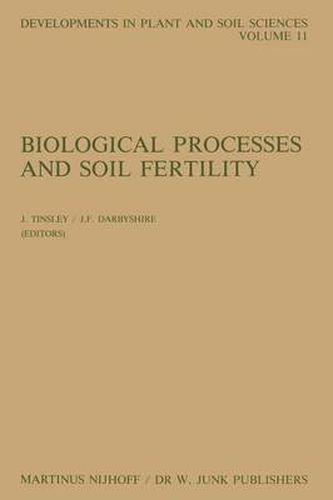Readings Newsletter
Become a Readings Member to make your shopping experience even easier.
Sign in or sign up for free!
You’re not far away from qualifying for FREE standard shipping within Australia
You’ve qualified for FREE standard shipping within Australia
The cart is loading…






This title is printed to order. This book may have been self-published. If so, we cannot guarantee the quality of the content. In the main most books will have gone through the editing process however some may not. We therefore suggest that you be aware of this before ordering this book. If in doubt check either the author or publisher’s details as we are unable to accept any returns unless they are faulty. Please contact us if you have any questions.
The success of shifting cultivation systems developed by subsistence farmers testifies to the resilience of the natural soil-plant ecosystems to recover from the offtake of nutrients in crops and loss of soil struc ture. By contrast, the development of intensive cropping systems requires large inputs especially of nitrogen, together with phosphorus, sulphur and other essential elements in order to maintain the nutrient levels needed for abundant crop yields. As Dr. Cooke ably pointed out in his introductory lecture, the dis coveries and experiments of the 19th century encouraged farmers in temperate zones to rely greatly on chemical fertilizers supplements. However, the work of Charles Da{win on soil mixing by earthworms and the discovery by Hellriegel and Wilfarth in 1886 that the nodules on legume roots contain colonies of symbiotic bacteria able to capture atmospheric nitrogen molecules to the benefit of the host plant heralded a growing realization of the importance of soil biota in fertility studies. Biological fixation of nitrogen has been the theme of many meetings and publi~ations hitherto but at this Conference, convened on the delightful campus of Reading University, attention was mainly focussed on other biological processes in soil fertility. These Proceedings record the dominant themes and include six keynote addresses delivered at plenary sessions and seven introductory lectures to paper reading sessions by invited individuals plus 22 of the proferred papers, in six sections as tabled in the contents list.
$9.00 standard shipping within Australia
FREE standard shipping within Australia for orders over $100.00
Express & International shipping calculated at checkout
This title is printed to order. This book may have been self-published. If so, we cannot guarantee the quality of the content. In the main most books will have gone through the editing process however some may not. We therefore suggest that you be aware of this before ordering this book. If in doubt check either the author or publisher’s details as we are unable to accept any returns unless they are faulty. Please contact us if you have any questions.
The success of shifting cultivation systems developed by subsistence farmers testifies to the resilience of the natural soil-plant ecosystems to recover from the offtake of nutrients in crops and loss of soil struc ture. By contrast, the development of intensive cropping systems requires large inputs especially of nitrogen, together with phosphorus, sulphur and other essential elements in order to maintain the nutrient levels needed for abundant crop yields. As Dr. Cooke ably pointed out in his introductory lecture, the dis coveries and experiments of the 19th century encouraged farmers in temperate zones to rely greatly on chemical fertilizers supplements. However, the work of Charles Da{win on soil mixing by earthworms and the discovery by Hellriegel and Wilfarth in 1886 that the nodules on legume roots contain colonies of symbiotic bacteria able to capture atmospheric nitrogen molecules to the benefit of the host plant heralded a growing realization of the importance of soil biota in fertility studies. Biological fixation of nitrogen has been the theme of many meetings and publi~ations hitherto but at this Conference, convened on the delightful campus of Reading University, attention was mainly focussed on other biological processes in soil fertility. These Proceedings record the dominant themes and include six keynote addresses delivered at plenary sessions and seven introductory lectures to paper reading sessions by invited individuals plus 22 of the proferred papers, in six sections as tabled in the contents list.